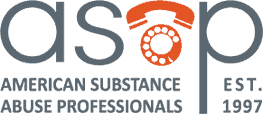By: David Sparkman, EHS Today
Recent reports show that because of the COVID-19 pandemic, drugs and alcohol abuse has skyrocketed and remains a significant occupational safety challenge for employers. Add to that the changing state laws regarding marijuana use, and it’s clear that employers need to act now to update their organizations’ drug policies.
Drug and alcohol impairments represent a constant safety threat. They can hinder employee judgment and motor skills, frequently resulting in near misses, accidents, injuries and property damage, say attorneys Mark A. Lies, II and Adam R. Young of the Seyfarth Shaw law firm.
“In our practice, we have seen significant employee injuries where impaired employees have errantly overturned a powered industrial truck, removed a guard on an operational machine, detached a personal fall arrest system while working on a platform 80 feet in the air, and walked in front of a piece of heavy machinery.”
Safety hazards are just the tip of the iceberg, they add. Drug and alcohol impairments can result in poor performance, workplace mistakes, reduced output and poor morale. Employees may be more likely to engage in theft or shift workloads to other employees. Impairment increases the likelihood of sexual harassments in the workplace in all of its forms. Impairments also are correlated with workplace violence incidents, including physical assaults on employees.
“Employers would be wise to recognize the risks posed by drugs and alcohol to the workplace and take action to address the hazard through a comprehensive program and testing regime,” Lies and Young recommend.
Most of the recent reports on drug abuse have focused on hard drugs—like heroin, fentanyl, cocaine and methamphetamine—but marijuana-impaired workers are still a serious concern for employers as well, the attorneys point out.
Marijuana remains a Schedule I controlled substance under federal law, but on Jan. 1 Illinois became the 11th state to legalize adult use of recreational cannabis. Currently, 28 states, the District of Columbia, Guam and Puerto Rico permit residents to use medical marijuana, and at least 17 other states allow use of products with low levels of THC, marijuana’s psychoactive chemical. Many states also have anti-discrimination laws for marijuana users that should concern employers.
“Employment-based drug testing services have reported widespread increases in positivity rates for marijuana in those states that have legalized marijuana,” Lies and Young observe. “Additional legalizations of recreational marijuana likely will create additional workplace impairments across the county.”
Addiction Is Widespread
According to the National Safety Council, 2% of working adults are addicted to marijuana and one in 13 working Americans to alcohol. Workers in construction and extraction experience the highest rates of substance use disorders, with 15.6% of employees on average living with a substance use disorder. The highest rate of prescription pain medication disorders is among workers in the services sector.
Not protected by relaxed state marijuana laws are employees in safety sensitive positions. These are people who typically perform functions like driving trucks, operating heavy equipment or mixing caustic chemicals (this list is non-exhaustive).
Safety professionals recommend zero tolerance policies for impairing drugs for those in safety sensitive positions, the attorneys note. Zero tolerance means that employers will not tolerate drug use or impairment at any level for these employees. Employers also may lawfully implement zero tolerance policies and prohibit possession, use, impairment or distribution in the workplace.
Keep in mind that zero tolerance policies can be complex and have numerous components, Lies and Young stress. “One of the most overlooked components of a policy is the definition of prohibited drugs—we recommend that clients proscribe controlled substances, synthetic drugs, analogs and popular non-psychoactive cannabinoids like CBD. “
They add that managers should be trained on how to spot someone impaired by drugs and alcohol. Impairment then can be assessed or confirmed through drug testing. Drug testing also can be a helpful tool in a post-incident context, to help determine the root cause of an incident.
Alleged violations of a drug and alcohol policy should be subject to comprehensive investigation, they suggest. “We recommend appropriate disciplinary policies, to be applied consistently across the workforce.”
However, zero tolerance does not mean that every employee who violates the policy must be immediately discharged, Lies and Young explain. Many employers resort to Employee Assistance Programs (EAPs) and other resources to help employees with addiction issues take a break from the workplace, treat their addiction, and return to work.
“Employees are valuable in terms of human capital, knowledge, experience and training; substance abuse can be a temporary condition overcome with treatment and/or psychological counseling,” they say. “Accordingly, as mental health issues have been increasingly destigmatized, many employers are using EAP as a lawful and helpful solution to addiction and substance abuse.”
Disabilities Law Protection
The Americans with Disabilities Act (ADA) specifically allows employers to act to ensure their workplaces are free from the use of illegal drugs and alcohol. The law does not prevent employers from prohibiting the use, impairment and possession of alcohol and drugs, as well as paraphernalia in the workplace. An employer may discharge or deny employment to persons who are currently engaged in the illegal use of drugs or are under the influence of alcohol.
However, the ADA protects employees with what it defines as mental and physical disabilities—including mental health disabilities, such as depression, alcoholism and drug addiction. As a result, current casual users of illegal drugs and alcohol are not protected under the ADA.
The law does create limited protection from discrimination for employees who are (1) recovering drug abusers and for alcoholics, (2) successfully rehabilitated and are no longer engaged in the illegal use of drugs or inappropriate use of legal drugs or alcohol, (3) currently participating in a rehabilitation program and are no longer engaging in the illegal use of drugs or inappropriate use of legal drugs or alcohol, and (4) are erroneously regarded as illegally using drugs or abusing alcohol.
These employees are protected from discrimination on the basis of a history of drug addiction, and their attendance at Alcoholics Anonymous or Narcotics Anonymous meetings. Employers may not hold recovering drug addicts or alcoholics to a higher standard of performance or attendance.
Lies and Young remind employers that they cannot subject employees to medical inquiries, unless they are “job related and consistent with business necessity,” such as inquiries about a personal history of mental illness or alcoholism. However, an employer does not violate the ADA when it engages in reasonable suspicion, post-accident or return-to-duty drug testing.
The ADA creates a duty to engage in an “interactive process” with employees who raise a disability and find a “reasonable accommodation” where possible, to accommodate their disability. If a recovering drug addict is not currently illegally using drugs (or abusing legal drugs or alcohol), then he or she may be entitled to reasonable accommodation.
These reasonable accommodations may include a modified work schedule so the employee could attend Narcotics Anonymous meetings or a leave of absence so the employee could seek treatment. An employer has no duty to accommodate an employee by permitting drug or alcohol impairment at work. Nor does the employer have to forgive misconduct because the misconduct resulted from alcoholism or drug addiction.
“In the post-COVID pandemic world with many employees working from home, it may be harder to ensure that employees comply and do not engage in drug use or impairment while at work,” Lies and Young recommend. “To minimize liabilities, employers should develop robust drug and alcohol policies.”
Sparkman, D. (2020). How to keep drugs out of the workplace. EHS Today. Retrieved from https://www.ehstoday.com/health/article/21145946/how-to-keep-drugs-out-of-the-workplace


